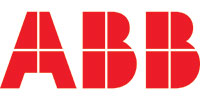Whitepapers

Natural gas contaminants such as H2S, H2O and CO2 constitute a significant hazard to an operator’s business as they represent both safety and pipeline integrity risk. Discover a solution engineered to measure multiple gas contaminants in process streams. Designed for remote and hazardous locations, the solution delivers superior performance, low cost of ownership, and fast response to process upsets – within seconds.
Watch this video to learn out how the solution can enhance the safety and reliability of your pipeline operations.
Download Whitepaper
Temperature measurement at oil and gas wellheads is essential for optimizing operations, ensuring safety, and enhancing production efficiency. This application note shows how well head temperature monitoring can empower you to meet key challenges such as:
- Indicator of flow conditions
- Reservoir diagnostics
- Early detection of well behavior
- Prevention of hydrate formation
- Corrosion monitoring
- Enhanced recovery techniques
- Spill prevention
- Automation and remote monitoring
- Enhanced decision making
- Data correlation
Download this application note for details.
Download Whitepaper
While hydrogen in its normal state does not cause corrosion, it can cause a measurement related problem - hydrogen permeation - in pressure transmitters under certain circumstances if the wetted diaphragms are not protected against the ingress of hydrogen. However, this hydrogen permeation can be managed by understanding the concentration of hydrogen ions in the process fluid, operating conditions, and adopting the appropriate preventative measures. This whitepaper looks at this phenomenon called hydrogen permeation, the impact it has on pressure transmitters, and how it can be avoided using a new H-Shield technology.
Download Whitepaper
This white paper by DNV asserts the vital importance of liquefied natural gas (LNG) in bolstering global energy security and advancing decarbonization efforts. A significant 60% increase in LNG demand by 2040 is anticipated, underscoring the necessity for strategic project management. The paper unequivocally calls for substantial investment in Front-End Engineering Design (FEED) studies to effectively manage multi-million dollar risks, prevent cost overruns, and guarantee safety and reliability. It emphasizes that careful selection of technology, modularization, efficient labor management, and the integration of digital tools are non-negotiable for success. Furthermore, the paper strongly advocates for independent third-party reviews as essential safeguards to ensure financial and operational integrity in complex LNG projects across the United States.
Download Whitepaper
This white paper examines the role of turbomachinery across key stages of LNG production, including pre-treatment and liquefaction. It outlines the function and configuration of compressors, turboexpanders, and Companders within different refrigeration cycles, and discusses relevant design considerations such as bearing systems, seal technologies, and thermal management. The paper also considers how existing LNG machinery designs are being adapted for emerging cryogenic applications, including liquid hydrogen.
Download Whitepaper
For accurate and reliable measurement of gas contaminants, it is critical that the instrument is sensitive only to the contaminant itself and is not impacted by any variance in the gas stream composition. Download this white paper to learn how the variance, also known as cross-interference, can be managed by Sensi+ natural gas analyzer.
Download Whitepaper
This case study outlines how a leading oil and gas producer partnered with ABB to implement Ethernet-connected Coriolis meters to efficiently automate compliance verification in response to regulatory demands. The results reduced cost and created operational efficiencies by streamlining of data acquisition, reducing manpower hours, and enhancing operational insights for timely and effective decision making.
Download Whitepaper
Natural gas is uniquely positioned as a transition fuel to support an affordable and secure energy transformation through displacement of coal power electricity generation and supplementing renewable electricity.
The safe, reliable and environmentally sustainable delivery of LNG to consumer markets requires investment in new and expanded infrastructure, continuous process improvement, increasingly robust supply chain networks and collaboration between members of the value chain—all achieved by applying digital solutions across the asset lifecycle.
Download this white paper to read how industry leaders leveraged digital and analytical solutions to:
- Improve process design accuracy by debottlenecking gas processes, increasing plant capacity by 20%
- Shorten plant start up time by 6 hours, saving $200K USD for a 1M Mt/yr LNG plant
- Reduce operator interventions by 90% and cut flaring from the boil-off gas (BOG) system, reducing emissions and increasing LNG production by 1-2%
Learn how advancements in dynamic simulation technology can help you navigate the complexities of the energy landscape, ensuring profitability, sustainability and resilience in an ever-changing world.
Download Whitepaper
- ExxonMobil halts 1-Bft3d blue hydrogen project in Texas
- Aramco and Yokogawa commission multiple autonomous control AI agents at Fadhili gas plant
- Ukraine will resume gas imports via Transbalkan route in November
- Mitsubishi to inject $260 MM into Brunei LNG project
- Freeport LNG (U.S.) on track to take in more natgas on Thursday after unit outage


